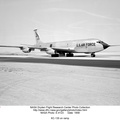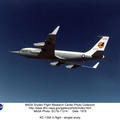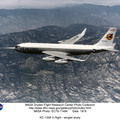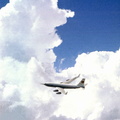
WIKIARCHIVES.SPACE
The Human Spaceflight Archive

Information
- Taken in
- Edwards Air Force Base
- 작성자
- NASA
- Description
- A chase plane view of the tufts on the KC-135 winglet. The use of tufts in flight research dates back to the early days of the NACA, and remains an effective means of observing airflow even today. In this procedure, rows of strings are attached to an airplane's surface, with one end of each string taped to the airplane and the other end free to swing about in the airflow. The movements of the tufts are photographed by on-board cameras or a chase plane. If the tufts are arrayed in neat rows, as seen here, then the airflow is smooth over the airplane's surface. If, however, they are moving about violently, it suggests turbulent airflow. Such motions may indicate high drag, flow separation (such as in a stall), or buffeting. In some cases, tufts will actually point forward, indicating the airflow has reversed direction.
- 생성일
- 월요일 20 8월 1979
- Source link
- https://www.dfrc.nasa.gov/Gallery/Photo/KC-135/index.html
- 방문자
- 20
- 평점
- 평점 없음
- 이 사진 평가
- License
- Public Domain
- Modified by WikiArchives
- No (original)
- 다운로드
- 0
Powered by Piwigo




